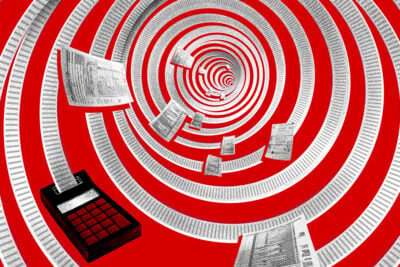
Series: The ProPublica Free Tax Guide
Free, Fact-Checked Tax Information. That's All.
You’ve figured out your deductions or credits, calculated how much you owed in taxes and successfully filed your return. If you’re sitting around wondering where your money is, you’re not alone. Lucky for you, the IRS offers several ways to track your tax return.
How Do I Track My Tax Return?
Once you have filed your tax return, there are three options for tracking your refund:
- Online: You can check your refund status on the IRS website. See below for the information you’ll need to have handy.
- App: The IRS2Go app is available for both iPhone (iOS) and Android users. You can download it using:
- Phone: The IRS refund hotline is 800-829-1954. This option is especially useful for those who do not have internet access.
What information do I need to track my tax return?
To track your tax return, there are three things you need:
- Your Social Security number or Individual Taxpayer Identification Number (ITIN).
- Your filing status: single filer, married filing jointly, married filing separately, head of household or qualifying widow or widower. Find out what these mean here.
- Your exact refund amount.
When Can I Check on My Tax Refund?
If you e-filed: You can check on your refund after 24 hours, unless you applied for the earned income tax credit before mid-February. The IRS recommends getting in touch if you haven’t received your tax refund after 21 days.
If you filed by mail: You usually aren’t able to check your status for four weeks if you mailed in your taxes, but you may have already received your refund by that time. The IRS is warning of weekslong and even monthslong delays in 2023 for mailed-in taxes. If you mailed in your taxes and are waiting for your refund, the IRS says not to file a second time and not to call.
What is the tax refund schedule?
The IRS refuses to guarantee a day you’ll get your refund. Timing also depends on how you file and whether you get your return via direct deposit or check. For most people who file electronically though, the IRS issues refunds within 21 days of filing.
What are the tax return statuses?
When you check on your return, there are three statuses you might get:
- Your return has been received.
- Your refund has been approved.
- Your refund has been sent.
Why Am I Not Getting My Tax Refund?
There are a number of reasons why your refund may be held up. There might be a delay if:
- You filed by snail mail. Due to the ongoing impact of the COVID-19 pandemic, the IRS has a severe paperwork backlog.
- Your return includes any errors or is incomplete.
- You filed for the earned income tax credit or the additional child tax credit. By law, the IRS cannot issue your refund before mid-February.
- You’ve been the victim of identity theft, fraud or a scam.
- You’ve been audited.
- You owe back taxes, state taxes, student loan payments or child support. In some cases, the Treasury Department will put your refund toward the money you owe. You will receive a letter from the Treasury’s Bureau of the Fiscal Service explaining if your refund was used to pay another debt you owe.
- Your return includes Form 8379, Injured Spouse Allocation, which can take as many as 14 weeks to process.
Can I Get My Tax Refund Early?
Short answer: No.
No one can give you immediate access to your tax refund — not the IRS, a bank or anyone else. That said, some tax-preparation companies do offer options to effectively give you access to money sooner, either through a refund anticipation check or a refund advance loan.
I need money now. What are refund advance loans and refund anticipation checks?
Some tax preparation services offer ways to get you money before your refund is issued.
With a refund advance loan — also referred to as a refund anticipation loan or RAL — your tax preparer will give you a loan that will be repaid with your tax refund. The loan amount is usually a portion of your estimated tax refund minus tax preparation service charges and other fees. Sometimes, the money will be deposited on a prepaid card that comes with additional fees. When the IRS issues your refund, your tax preparer will take money out of your tax refund as repayment for the loan.
These days, there are two types of RALs:
- “No Fee” or “Advance” RALs are often called a “refund advance” and claim to have “no fees.” However, in order to apply for and receive the loan, you have to use the company's tax-prep service, which may have significant costs. This can route eligible people away from free tax filing alternatives with no guarantee that a loan of any amount will be approved by the bank. There may also be hidden fees for these loans.
- Interest-bearing RALs are another option where lenders offer much larger loans. The catch? You pay more in interest and fees.
A refund anticipation check, or RAC, lets you put off paying for the tax-preparation service you use to file your taxes. Typically, you’ll agree to pay an additional fee to have the cost of tax preparation deducted from your refund amount. Once the IRS issues your refund, the preparer deducts this fee and the cost of preparing your taxes and then gives the rest of the money to you.
Keep in mind that if you don’t have the money to use a paid tax service, you may be able to file completely for free without worrying about any of these fees.
It’s not always clearly explained, but both refund advance loans and refund anticipation checks usually involve a temporary bank account being set up in your name, which is how the preparer takes out their portion of your refund.
Before agreeing to use a tax-preparation service in exchange for an advance, read the terms carefully and make sure you understand the total cost to you.
About this guide: ProPublica has reported on the IRS, the Free File program and other tax topics for years. ProPublica’s tax guide is not personalized tax advice. Speak to a tax professional about your specific tax situation.
Kristen Doerer is a reporter in Washington, D.C. Her writing has appeared in PBS NewsHour, The Guardian and The Chronicle of Higher Education, among others. Follow her on Twitter at @k2doe.





